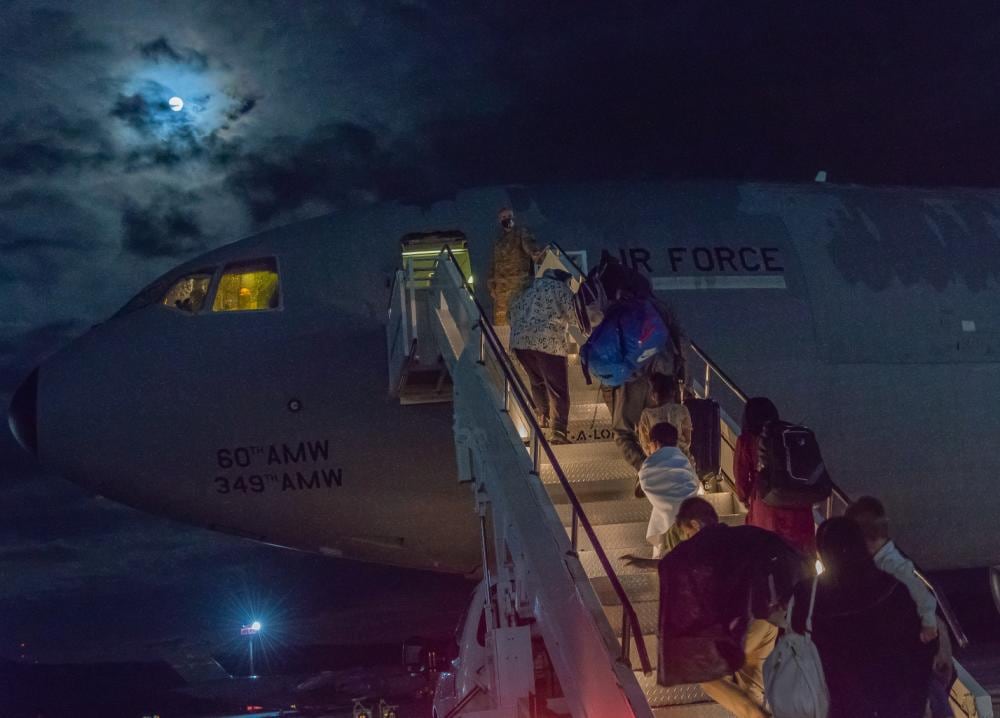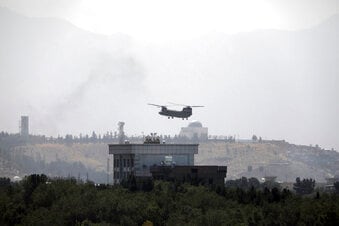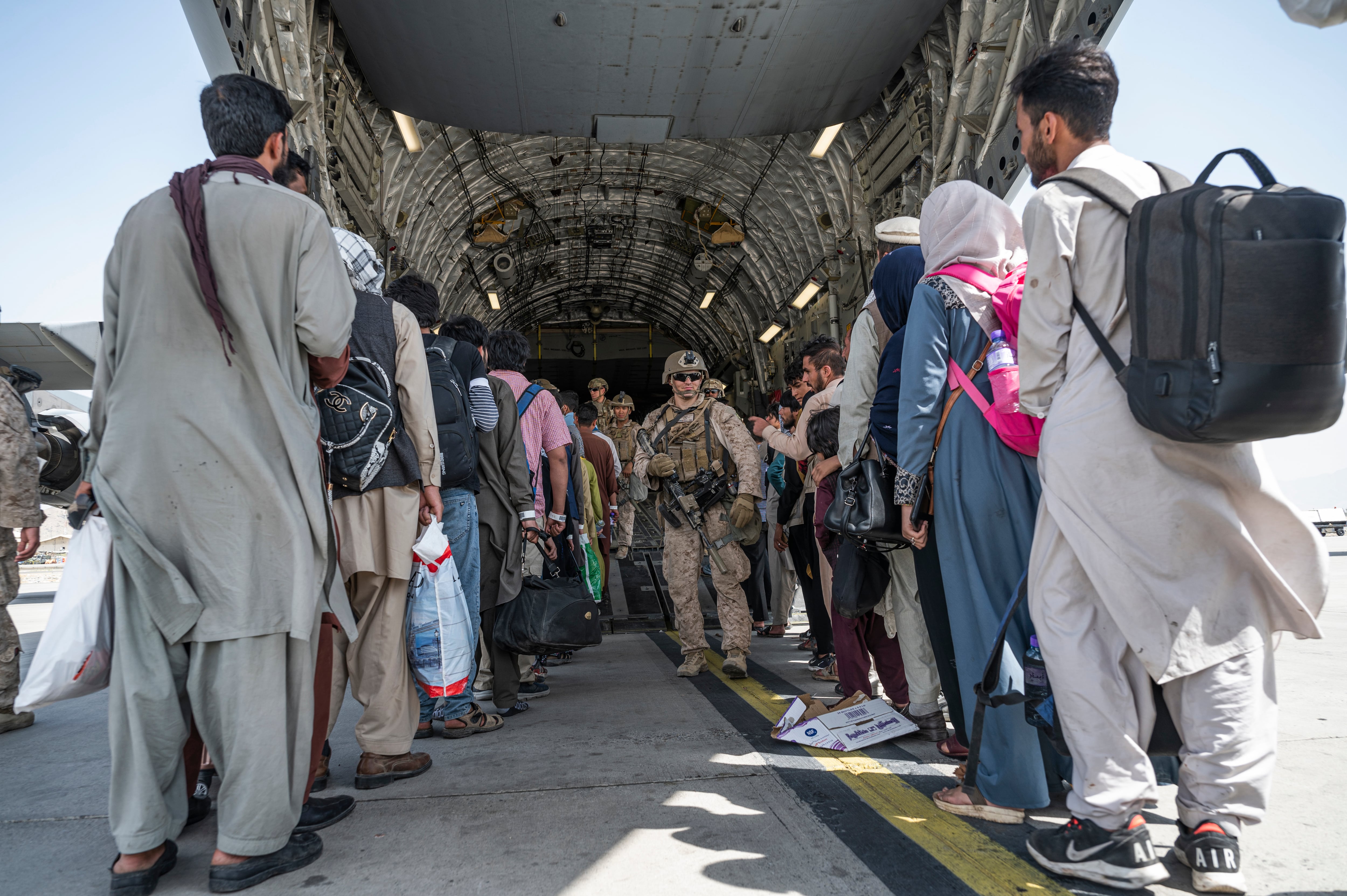More than 21,600 evacuated from Afghanistan on Monday, per the latest count from the Defense Department. In addition to 12,700 flown out on military aircraft, another 8,900 took civilian or military flights from partner countries, blowing past the military’s estimated 9,000-a-day capacity.
A flight took off roughly every 45 minutes, according to the Maj. Gen, Hank Taylor, deputy director of the Joint Staff for regional operations, for a total of 32 C-17 Globemasters and five C-130 Hercules. With an unknown number of Americans and Afghans to evacuate before the end of the month, agencies on the ground are hoping to keep up the pace.
“That’s definitely the plan,” Pentagon spokesman John Kirby told reporters.
DoD is tracking about 63,000 evacuations total since late July, 58,000 of those since Aug. 14.
RELATED

Troops heading out
Meanwhile, U.S. troops have begun leaving HKIA, Kirby said in a statement issued Tuesday evening.
“We can confirm reports of the departure from Afghanistan of several hundred U.S. troops,” Kirby said. “These troops represent a mix of headquarters staff, maintenance and other enabling functions that were scheduled to leave and whose mission at the airport was complete. Their departure represents prudent and efficient force management. It will have no impact on the mission at hand.”
Kirby added that the departures were not a sign that “the retrograde of our non-combatant operation in Afghanistan” has been ordered … “nor would it need to be ordered at this stage in the operation.”
The mission, said Kirby, “remains the same, and as you heard from the President today, it remains on the same timeline. We are focused on evacuating as many people as we can before the end of the month. The Secretary and military leaders are drawing up contingency plans should there be a need to reconsider this timeline. No such decision has been made.”
Commanders on the ground, he said, “are empowered to make any adjustments they see fit, when they see fit. That includes changes to the footprint.”
Ramped up effort
Though Pentagon officials have said since the operation began that they had more than enough aircraft capacity, the slow ramp up of evacuations was mostly due to the ability of people to get to the Kabul airport and be processed.
That has been going more smoothly, officials said.. As of Tuesday morning, there were about 5,000 evacuees at the airport waiting to be evacuated, with sites both in the Middle East and Europe where Afghans will be processed before resettling in the United States or partner countries.
“The continued ability to inform, and get the word out, of how to get into the gates, where to come,” Taylor said, including bringing the right documentation, has helped increase the number of people gettin gout. “The processing of those, not only through the gates, but the processing internally on Kabul by our troops that are there, continues to become more efficient.”
RELATED

And while there are still many reports of people waiting in line for hours, sometimes coming back multiple times and still being refused, officials said the crowds outside are smaller, and the panic has died down.
“The crush of those first few days has reduced, as more order and structure around the airport has increased,” Kirby said.
Officially, the U.S. has seven more days to get out as many people as possible, though President Joe Biden has hinted that the mission could continue until every willing U.S. citizen has gotten out.
“I’m not going to get into a specific tick-tock,” Kirby said of the next few days, as military and State Department personnel will have to shift from in-processing new evacuees to packing themselves up and flying out for good.
That will take “at least several days,” Kirby said, though there’s been no timeline announced for the end of the drawdown.
Meghann Myers is the Pentagon bureau chief at Military Times. She covers operations, policy, personnel, leadership and other issues affecting service members.




